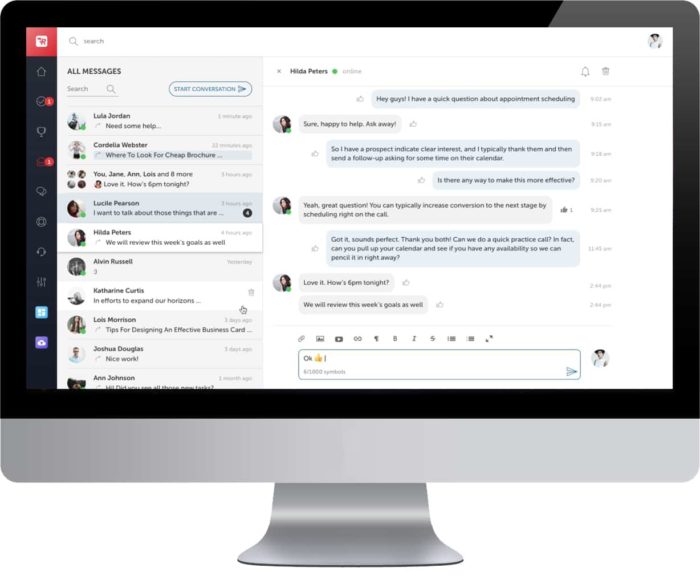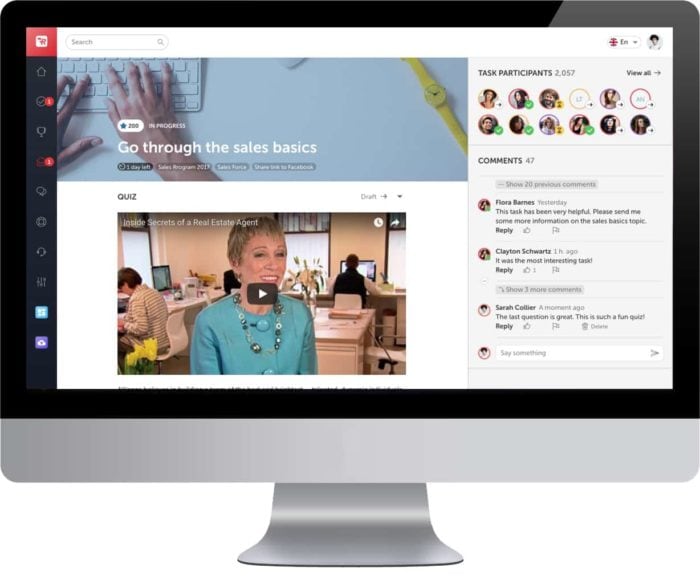L&D Leaders Share Secrets to Designing Ultimate Experiences for Employee Learning and Development in 2022
How to Integrate Social Learning into a Company’s Operations
Social learning becomes increasingly important in today’s world of corporate training. According to the Brandon Hall Group study, 73% of companies plan to focus even more on social learning over the next year. A report from Bersin by Deloitte states that organizations with at least 10,000 employees spent three times as much on social learning tools than they had in the previous two years.
But why do we see an increased interest in social learning? It is important to note that the brain is a social organ. “Our brains require stimulation and connection to survive and thrive. A brain without connection to other brains and without sufficient challenge will shrink and eventually die–moreover, the modern human brain’s primary environment is our matrix of social relationships. As a result, close supportive relationships stimulate positive emotions, neuroplasticity, and learning.”
An effective learning platform uses a similar approach. It’s all about facilitating organic informal learning by being social at its core. But what is “social learning” in the context of corporate training and business operations in general?
Social learning is an element of effective training that some advanced enterprise learning platforms have ingrained in their functionality. Social learning brings together communities of employees within an organization based on job roles, departments, or geographies to learn about a subject better through interaction with and insights from each other. Such peer coaching has proven to be a very powerful tool to better understand and retain newly acquired knowledge, improving collaboration between team members and sparking innovation.
Must-have social features for your learning platform
Social media such as Twitter, Facebook, Instagram, Snapchat, and the like have become an integral part of our life.
The conventions associated with social media including profiles, messaging, communities, posts, likes, upvotes and shares are now tools of modern learning platforms that enable social learning. But don’t confuse social media platforms with social learning tools.
Learning platforms facilitate the information flow by means of mobile learning, allowing employees to access the necessary training content on-the-go anytime, anywhere, and through any device. Social features also enable seamless and relevant collaboration around communities and activities, consistent with the company’s approach to communication and information flow.
So, what are the main components of an effective social learning platform?

- Direct and group messaging
Streamline communication is one of the most important business drivers, meaning it should be without any limits. Your employees, especially the distributed workforce and remote team members, should have seamless possibilities to contact their colleagues, managers, corporate, and support staff whenever necessary.
If your employees have a specific question that only certain people can answer, they’re welcome to start a private conversation. If they want to talk to several people, share content, or suggest some solutions, they can create groups that will focus on a specific subject for more constructive discussions with like-minded people. These options will ensure that all your employees are aligned around the business objectives and have the means to help each other handle any work-related challenges.
- Communities
Communities are a great tool for collaboration. They can align people based on a variety of criteria including geographical locations, departments, product lines, projects, campaigns, and the like. Moreover, within the social learning framework, employees can contribute user-generated training content. Such microlearning content has proven to be very valuable because it’s always up-to-date, engaging, and personal. It can be used to not only teach something new but also to show how employees apply training material to practice. Communities are where we usually see a lot of fruitful collaboration between teams happening—this is a place to exchange ideas about the learned material, receive feedback, and support each other within specific areas of the business.

- Discussion boards
Discussion groups serve as knowledge hubs, where users can discuss job-related things that matter to them. Anyone can ask a question or give an opinion to start a discussion in the community, allowing others to like or comment on it. The person who started the thread can mark the best reply as well as make it a featured discussion. This helps others to save time looking for the best answers right away. Discussions can also be a handy tool for the learning and development management to see what questions are “trending” to enhance their training content or to gain deeper insight into what employees are excited about or struggling with.

- Content rating and comments
Adding a comment section to training tasks allows users say thank you or give suggestions for improvement for a specific microlearning module. This is a very powerful tool to foster personal relationships with learners since interaction always leads to engagement. The sense of participation will guarantee that users will come back.
- Gamification
To make training enjoyable your employees need incentives. Elements of gamification in your learning platform will ensure that users log on to the learning system to not only gain knowledge but also to have fun while learning.
If your employees receive rewards for being active in discussions, completing training tasks faster than their colleagues, or unlocking cool badges for sharing their story about how they managed to solve an unpredicted situation, they will definitely be engaged in learning much more, which will lead to their personal and career growth. Additionally, by using gamification you can foster social learning and allocate points for employees who assist their peers. Earned points can be aggregated into multiple leaderboards, which can be geographical or based on business units, interests, campaigns, time periods, and so on, further igniting friendly competition between individuals and different types of groups within your organization.
So why nurture social learning? It’s authentic, instant and allows people to be autonomous and connected at the same time. Delivered through the right learning platform, social learning will become that spot next to the coffee machine where employees can exchange ideas and learn new things through discussions and peer support. Moreover, they will always have access to the necessary material whenever they need it.
Click here for your demo and see how Rallyware helps enterprises with large sales forces cut expenses, drive revenue, and transform operations.
News and Insights on Workforce Training & Engagement
We’re among top-notch eLearning and business engagement platforms recognized for effective training and talent development, helping to empower distributed workforces
Subscribe
